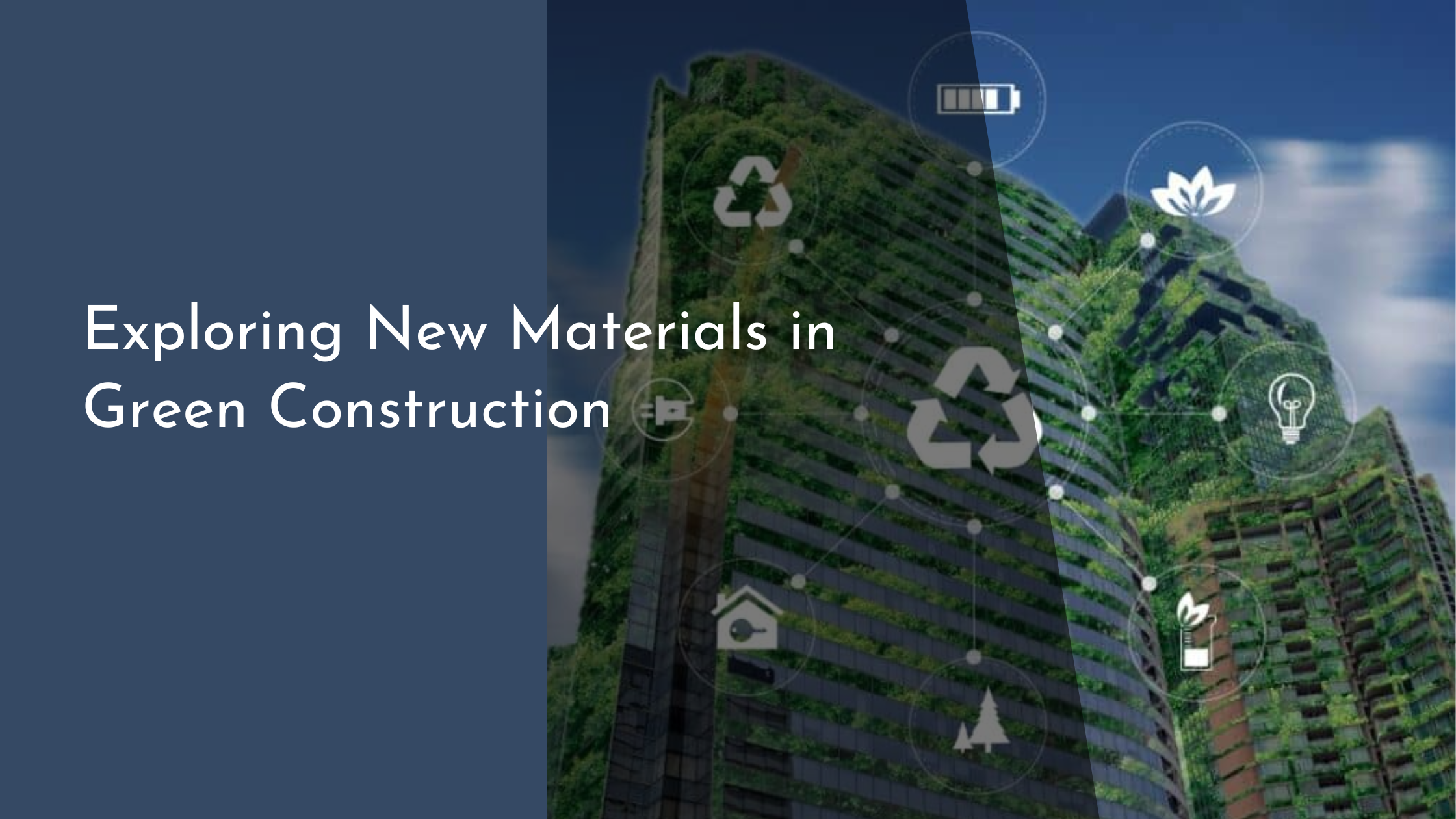Exploring New Materials in Green Construction
In the era of climate change and environmental consciousness, the construction industry finds itself at a pivotal crossroad. The traditional building methods, though robust, have been significant contributors to carbon emissions and resource depletion. Hence, there’s a burgeoning interest in sustainable construction practices that emphasize the use of green materials. These innovative solutions are not only environmentally friendly but also promise to revolutionize the way we design and build our living spaces. In this article, we delve into some of the most exciting materials and technologies shaping the future of green buildings.
Innovative Materials Transforming Green Building
The world of green construction is being reshaped by groundbreaking materials that offer both environmental benefits and enhanced performance. One such material is cross-laminated timber (CLT), which is gaining popularity as a sustainable alternative to traditional concrete and steel. CLT panels are made by stacking layers of wood at right angles and bonding them with structural adhesives, creating a strong, lightweight, and sustainable building material. CLT not only reduces carbon emissions but also offers excellent thermal insulation, making it a favorite among eco-conscious architects.
Similarly, bio-based materials like mycelium, the root structure of mushrooms, are gaining traction as sustainable building solutions. Mycelium can be grown into lightweight, strong, and biodegradable bricks that offer unique insulation properties. Furthermore, mycelium-based materials are produced using agricultural waste, turning what would otherwise be discarded into valuable construction resources. These innovations are providing builders with new options to reduce environmental impact while maintaining structural integrity and aesthetic appeal.
The Role of Nanotechnology in Eco-Friendly Design
Nanotechnology is playing a transformative role in the development of eco-friendly building materials. By manipulating materials at the molecular level, scientists are creating new solutions that enhance the durability and efficiency of structures. For instance, nano-coatings are being developed to make building surfaces self-cleaning, reducing the need for harmful chemical cleaning agents. These coatings also improve energy efficiency by reflecting heat and maintaining indoor temperatures, leading to reduced energy consumption.
Another exciting application of nanotechnology is in the development of advanced insulation materials. Aerogels, known as “frozen smoke,” are ultra-lightweight materials that provide exceptional thermal insulation. Made from silica nanoparticles, aerogels can be incorporated into walls and roofs to dramatically reduce heat loss. This advancement not only lowers energy costs but also contributes to a building’s overall sustainability by minimizing its environmental footprint. Nanotechnology continues to offer promising avenues for enhancing the efficiency and sustainability of green buildings.
Recycled Resources: From Waste to Building Blocks
One of the most significant trends in sustainable construction is the use of recycled materials, turning waste into viable building components. Plastic waste, for example, is being transformed into durable bricks and tiles. Companies are developing innovative solutions to compress and mold plastic into construction materials that are both strong and environmentally friendly. This not only addresses the pervasive issue of plastic pollution but also provides an affordable alternative to traditional building materials.
Additionally, construction waste itself is being repurposed to create composite materials. Recycled concrete, glass, and metal are being combined to form new building products that offer the same strength and longevity as their virgin counterparts. These recycled materials reduce the demand for new resources, minimize landfill waste, and often result in cost savings for construction projects. By embracing recycled resources, the industry is taking significant steps toward a more sustainable and circular economy in construction.
As we explore these new horizons in green construction, it becomes clear that our future depends on the innovative use of sustainable materials and technologies. The integration of materials like CLT, mycelium, and advanced nanotechnology, along with the clever reuse of waste, marks a significant shift towards a more sustainable and environmentally responsible building industry. Embracing these advancements not only holds promise for reducing our carbon footprint but also offers practical solutions that can be adopted on a global scale.
With the construction sector being a major player in global resource consumption and emissions, the transition to green building materials is not just desirable but essential. By investing in research, technology, and sustainable practices, we can construct a future where our buildings are in harmony with the planet, creating a healthier environment for generations to come. Let’s embrace this sustainable future with open arms and continue to innovate for a greener tomorrow.

